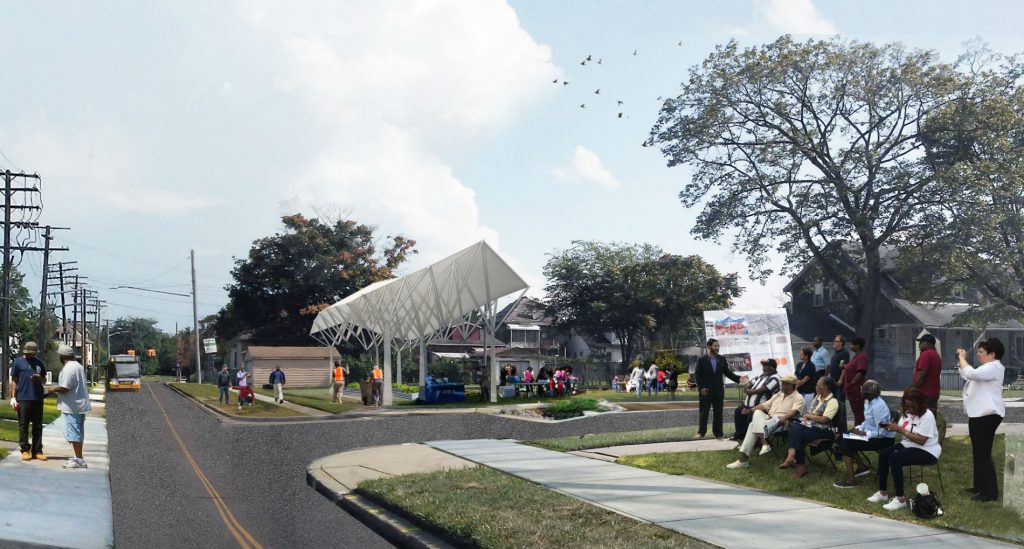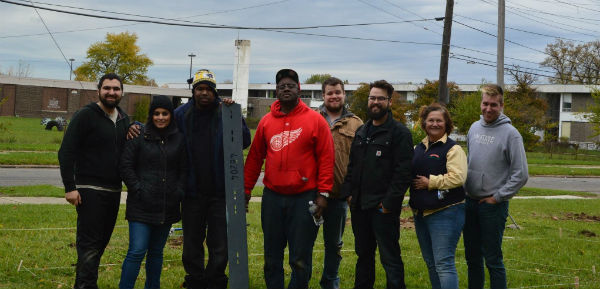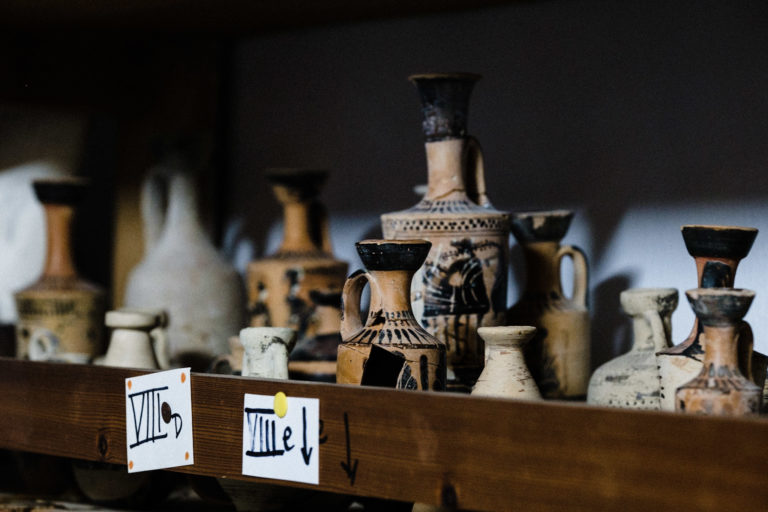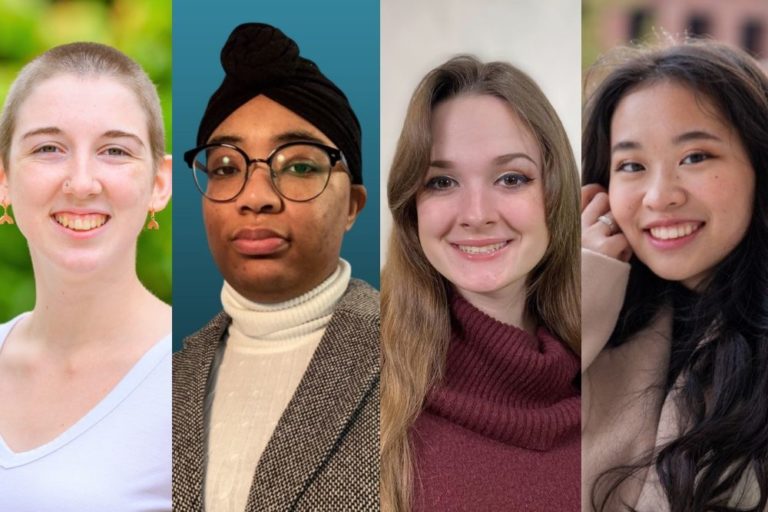
In the pursuit to balance growth and development while restoring the earth’s ecosystem, sustainability has become a core principle of the architectural discipline and the holistic design of the built environment.
One College of Arts & Letters alumna and the design firm she leads has been recognized for their work in this area by earning the top North American prize in what is described as the world’s most significant international competition for sustainable design.
The Detroit-based design firm, studio[Ci], a transdisciplinary design collaborative founded by BFA alumna Constance Bodurow, received the LafargeHolcim Awards Gold for North America for its neighborhood planning project in Detroit, called Grassroots Microgrid: the Seebaldt Pilot. This district-scale project reimagines empty lots as collective infrastructure for energy and food production as well as civic engagement.
With The Seebaldt Pilot, studio[Ci] is tackling one of Detroit’s greatest challenges.
“Taking the pocket vacancies normally characterized as the biggest problem in Detroit, the design turns them into an opportunity to create a compelling sustainable neighborhood,” the LafargeHolcim Awards jury stated.

For this project, studio[Ci] collaborated with residents of 48204, an historic and once grand but now forgotten Detroit neighborhood of 11,000 households and 28,000 residents, in creating a community based on collective empowerment that functions as sustainably as possible. The community-owned and managed infrastructure will include local renewable energy and food production, water and waste management, while also strengthening civic empowerment.
“We are both humbled and honored by this award,” said Bodurow, who founded studio[Ci] in 2008 and has served as the company’s Director since then. “Credit also goes to our extensive transdisciplinary team and the residents who worked in co-production with us.”
Project Receives U.S. Department of Energy Funding
The Seebaldt Pilot also was awarded one of 38 U.S. Department of Energy Solar in Your Community grants, which will help implement a Net Zero Energy district in Detroit/48204 serving low- and moderate-income households. Through a four-year partnership between studio[Ci] and the community-based nonprofit, It Starts at Home (IS@H), a consensus neighborhood vision was created to secure, stabilize, and sustainably grow 48204. The HEIRS Strategic Neighborhood Design Framework addresses infrastructure (energy, water, food, waste, and mobility) and renewable systems (workforce development, empowerment, education, culture, and economic development).
Eventually, the 48204 Net Zero Energy district will be anchored by a community center, providing needed services as the epicenter of a larger Net Zero Energy infrastructure and collectively owned distributed generation system.

The Seebaldt Pilot is based on acquisition and use of concentrations of vacant parcels in the study area – for solar and geothermal energy generation and water management.
The goals of the project include:
- stabilization and sustainability of land and housing infrastructure;
- reduction of energy costs and energy waste;
- water management;
- food production;
- waste reduction;
- public realm and mobility enhancements.
The initial focus for The Seebaldt Pilot (2017-2018) is on 25 households, located on Seebaldt Street between Firwood and Beechwood, and the 75 residents living there.
“We are starting with one block to test and prove performance, aesthetics, and accessibility, of our unique Net Zero Energy system and our strategy to leverage and deploy Detroit’s vacancy as an asset base for generative infrastructure,” Bodurow said. “We will then replicate and scale not only across the entire 48204 neighborhood, but hopefully other neighborhoods in Detroit, other cities, and even globally. We are optimistic about our model, and the potential for Net Zero Energy to empower and transform.”
MSU Sparks Passion for Design and Sustainability
Bodurow was born and raised in regional Detroit, received a BFA in Industrial Design from Michigan State University in 1981, and went on to earn a Master of City Planning and Master of Science in Architecture Studies from Massachusetts Institute of Technology. She also is an Associate Professor of Architecture at Lawrence Technological University and in 2013 achieved tenure.
“My passion to employ design agency and to address sustainability began at MSU in the College of Arts & Letters,” Bodurow said. “My undergraduate education provided me with a broad knowledge base to understand our global context, natural systems, and design and engineering at many scales, which inspired me to expand and employ my design skills beyond product design.”
“My passion to employ design agency and to address sustainability began at MSU in the College of Arts & Letters”
Constance Bodurow
This is the fifth time the LafargeHolcim Awards for Sustainable Construction have been presented, with each competition cycle spanning three years, from announcement to completion.
The LafargeHolcim Awards recognize innovative projects and future-oriented concepts in the fields of architecture, landscape architecture, urban design, civil engineering, mechanical engineering, and related fields. Award-winning designs go beyond current standards; showcase sustainable responses to technological, environmental, socioeconomic, and cultural issues affecting contemporary construction; and deliver new, surprising, and truly visionary solutions to the way we build.
The awards, administered by the LafargeHolcim Foundation based in Zurich, Switzerland, are divided into a regional and global phase. The five competition regions include Asia Pacific, Europe, Latin America, Middle East Africa, and North America. Winners of the North American awards were announced in Chicago on October 17, 2017.
Regional Gold, Silver, and Bronze winners now will compete for the 2018 Global LafargeHolcim Awards, the jury for which will meet in March 2018.
Project Wins Global Award
The Grassroots Microgrid: the Seebaldt Pilot won the 2018 Global LafargeHolcim Bronze Award which will be presented to studio[Ci] on July 14, 2018.
Alejandro Aravena, the jury head for the Global LafargeHolcim Awards, said, “As a community-driven initiative, the Bronze winner opens a path, innovating an approach that will need to be developed further.”
The 5th International LafargeHolcim Awards competition attracted 5,085 projects and visions to be implemented in 131 countries. The winners were announced March 28.


